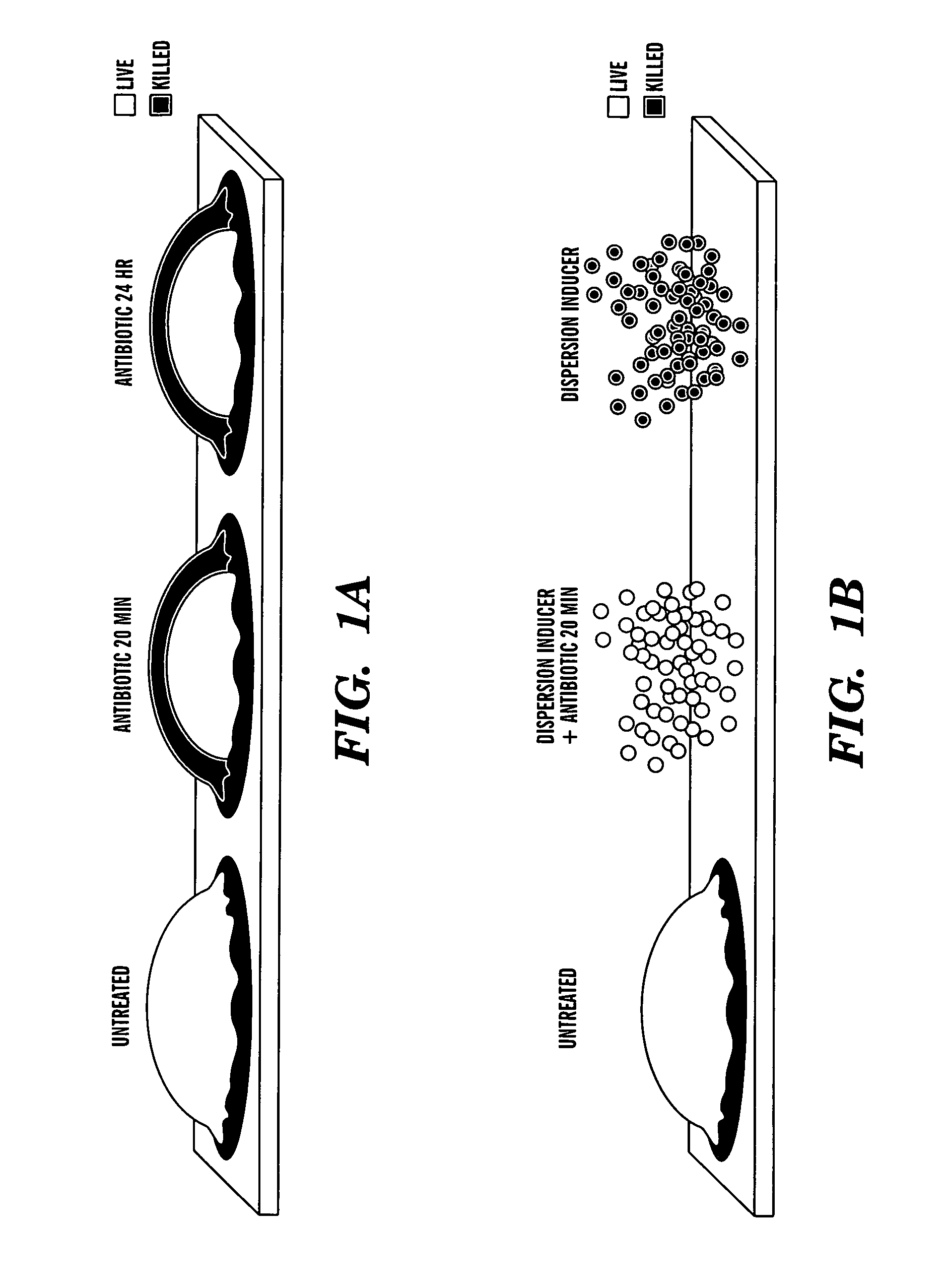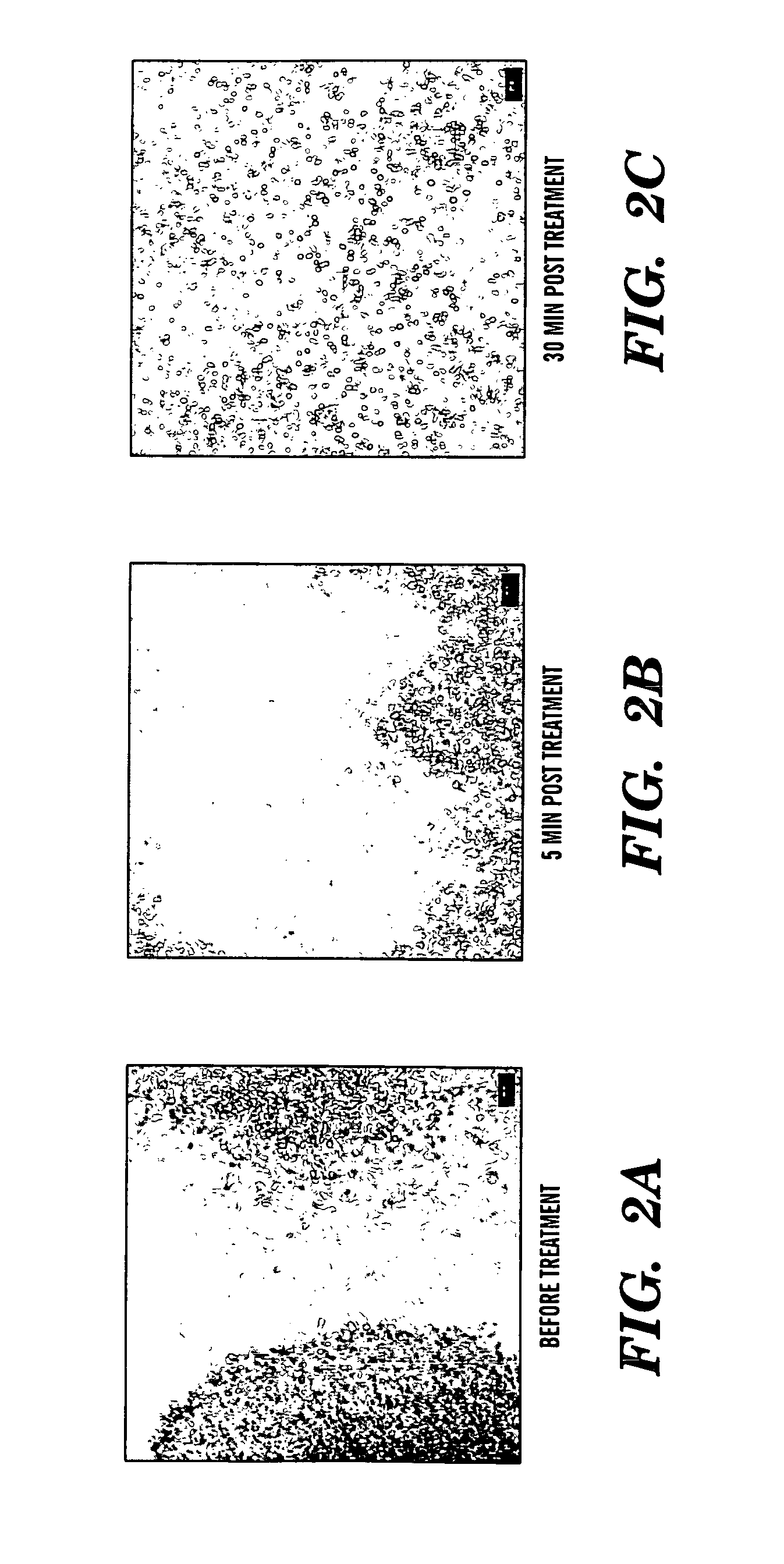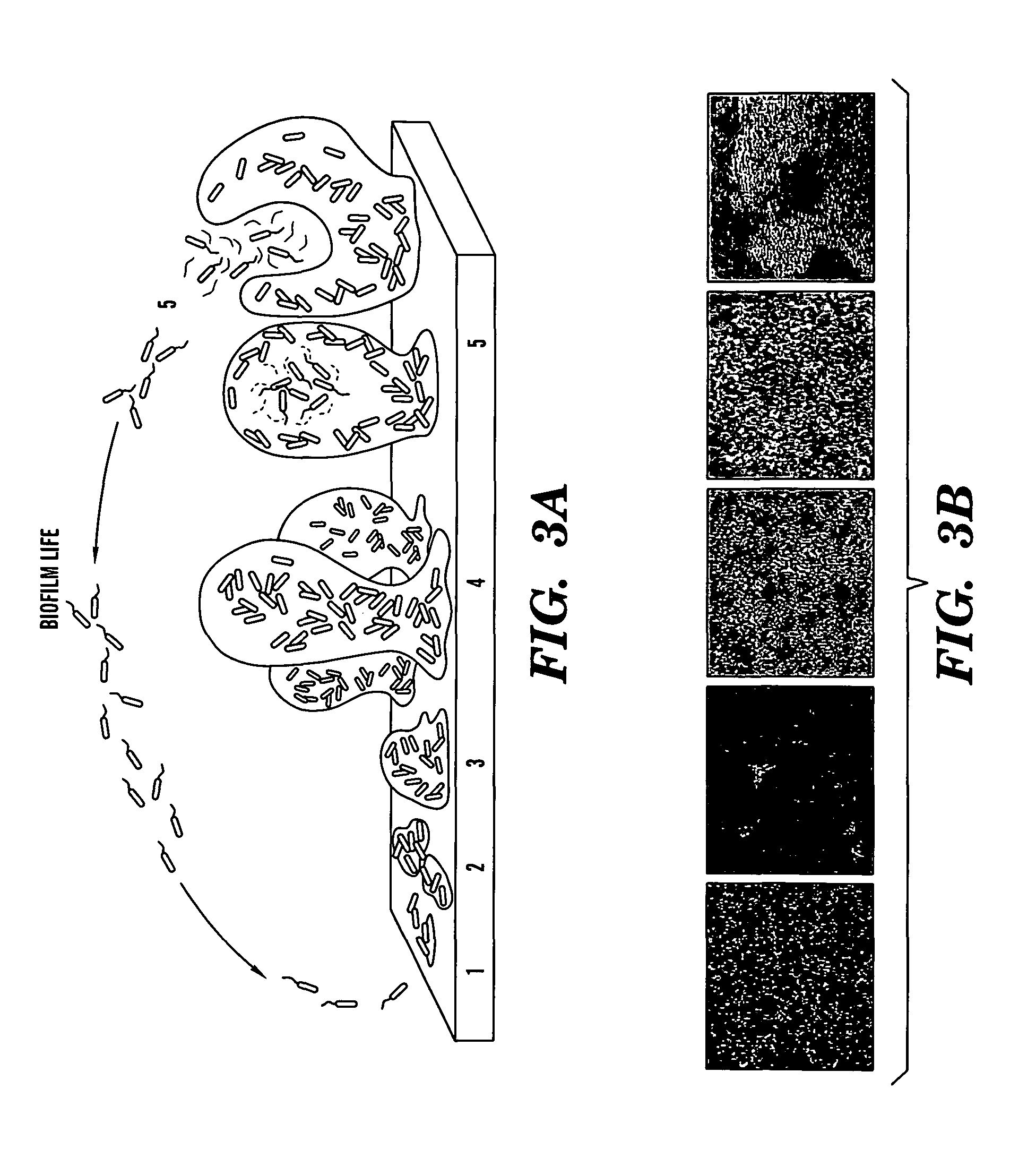Induction of a physiological dispersion response in bacterial cells in a biofilm
a biofilm and bacterial cell technology, applied in the field of inducing a physiological dispersion response in bacterial cells in a biofilm, can solve the problems of reducing the physiological state of biofilm bacteria, artificial chemical agents are unable to adequately attack and destroy infectious biofilm populations, and the protection conferred by biofilm matrix polymers
- Summary
- Abstract
- Description
- Claims
- Application Information
AI Technical Summary
Benefits of technology
Problems solved by technology
Method used
Image
Examples
example 1
Bacterial Strains and Media
[0102]The microorganisms used in this study included Pseudomonas aeruginosa PAO1 from B. H. Holloway, Escherichia coli (ATCC 10798), Proteus mirabilis (ATCC 25933), Klebsiella pneumoniae (ATCC 10273), Staphylococcus aureus (ATCC 12602), Streptococcus pyogenes (ATCC 19615), Bacillus subtilis (ATCC 6633), and Candida albicans (ATCC 20260) and a mixed undefined culture collected on R2A plates via airborne contamination Except where indicated, all experiments were performed in modified EPRI medium, containing 0.005% ammonium nitrate, 0.00019% KH2PO4, 0.00063% K2HPO4 (pH 7.0), and 0.001% Hutner salts (Cohen-Bazire et al., J. Cell. Comp. Physiol. 49:35 (1957), which is hereby incorporated by reference in its entirety), supplemented with 0.2% glucose. C. albicans was grown in modified EPRI medium supplemented with 0.2% glucose and 0.1% peptone. K. pneumoniae, P. mirabilis, S. aureus, and B. subtilis were grown in modified EPRI medium supplemented with 0.1% pepton...
example 2
Preparation of P. aeruginosa Spent Medium
[0103]To prepare cell-free spent culture medium, 6 mL of an overnight culture of P. aeruginosa PAO1 grown in modified EPRI medium at 30° C. were inoculated into four liters of modified EPRI medium and incubated for 10 days at room temperature with continuous stirring. Bacterial cells were sedimented by centrifugation (Sorvall RC 5B Plus Centrifuge, GSA Rotor; Thermo Electron Co., Ashville, N.C.) at 13,000×g for 15 minutes at 4° C. The supernatant was removed and filtered under vacuum through a 0.45 μm Millipore Type HA filter (Millipore. Co., Billerica, Mass.) and subsequently, through a 0.2 μm, Acrodisc 32 mm syringe filter (PALL Co., East Hills, N.Y.). Spent medium was stored at 4° C.
example 3
Preparation of CSM
[0104]The organic components of spent medium were extracted by adding 80 mL of chloroform to 250 mL of filtered spent medium in a separatory funnel. The chloroform fraction was removed after a separation time of 1 hr. Chloroform was evaporated at 40° C. using a Rotavapor R-3000 rotary evaporator (Büchi Laboratories, Flawil, Switzerland) and the remaining organic material was re-suspended in 6 mL of filtered nanopure water and evaporated to dryness using a Speed-Vac evaporator system (Savant Instruments, Inc., Hicksville, N.Y.) or lyophilized. These samples were then resuspended in culture medium or purified water. The final product is referred to as Chloroform extracted Spent Medium (CSM). Except where indicated, CSM was used in experiments at a final chloroform extracted organic carbon concentration 125 fold greater than found in spent medium.
PUM
| Property | Measurement | Unit |
|---|---|---|
| pH | aaaaa | aaaaa |
| pH | aaaaa | aaaaa |
| pH | aaaaa | aaaaa |
Abstract
Description
Claims
Application Information
 Login to View More
Login to View More - R&D
- Intellectual Property
- Life Sciences
- Materials
- Tech Scout
- Unparalleled Data Quality
- Higher Quality Content
- 60% Fewer Hallucinations
Browse by: Latest US Patents, China's latest patents, Technical Efficacy Thesaurus, Application Domain, Technology Topic, Popular Technical Reports.
© 2025 PatSnap. All rights reserved.Legal|Privacy policy|Modern Slavery Act Transparency Statement|Sitemap|About US| Contact US: help@patsnap.com



